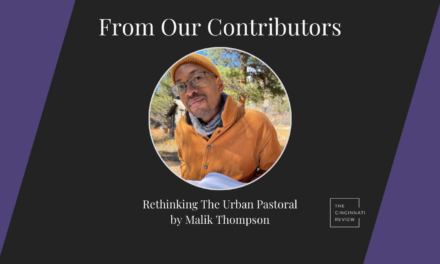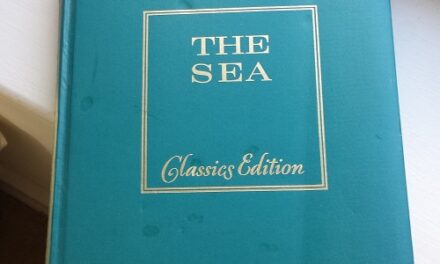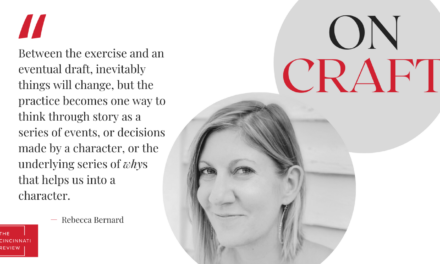 Welcome to the adagio movement of our Pas de Deux between fiction writers and 11.1 contributors Leslie Parry and Joan Leegant. Read on to witness these virtuosos pirouetting around such topics as adapting fairy tale motifs in contemporary literature, the advantages of dramatic action in short fiction, and (a nod to Black Friday) the dangers of what Leegant accurately classifies “the manic annual bridal dress sale at Boston’s Filene’s Basement.” We’ve all been there, and we were terrified.
Welcome to the adagio movement of our Pas de Deux between fiction writers and 11.1 contributors Leslie Parry and Joan Leegant. Read on to witness these virtuosos pirouetting around such topics as adapting fairy tale motifs in contemporary literature, the advantages of dramatic action in short fiction, and (a nod to Black Friday) the dangers of what Leegant accurately classifies “the manic annual bridal dress sale at Boston’s Filene’s Basement.” We’ve all been there, and we were terrified.
Leslie Parry: For the short time they’re reunited, Patricia acts as the parent to her own ailing mother. She buys her ice cream, improvises a spoon from a set of earrings(!), lifts her like a child when she’s too weak to stand. I was moved by her patience and pragmatism, her utter lack of self-pity. Even though both women are prone to violent outbursts (Patricia punching a stranger over a wedding dress, her mother wounding her father with a thrown glass), they can’t fully articulate their sadness or disappointment—or even their love. Their conversations are very practical; they ask only the immediate, necessary questions: What kind of dress? Do you want toast? As Patricia explains, “I had her last name and her bone structure and her lack of interest in staring down the barrel of the past.” And yet in the process of telling this story, she is exploring the past, and elliptically revealing her own fears and desires. What were the challenges to creating Patricia’s unique narrative voice, and to developing such a complicated relationship, especially in only a few thousand words?
Joan Leegant: I’d have to say that I didn’t so much create this narrative voice as receive it. I know that sounds kind of woo-woo, writer-as-vessel, but the voice in this case—actually, in all my stories, at least those that work—was there from the start. I like how T. C. Boyle put it (in the Introduction to his excellent anthology Doubletakes): In all of his fiction, he’s begun with “a voice and tone revealed to me in the first line [my emphasis] and pursued the unfolding of the story from there.” Or Maile Meloy (in Fiction Writer’s Review): “The stories don’t go unless I have the voice. It’s like getting into a car with a tricky clutch, and you can either get it in gear or you can’t.” So I got lucky here. A voice revealed itself, and I was in gear.
How did that voice arrive? A mystery, of course. But I remember where I started this story, which perhaps made it possible for that voice to emerge. I was teaching an all-day workshop for adult (that is, not college-age) writers, encouraging people to bear down on their sentences and write with urgency, to push past the tentative and polite. It was a lot of permission-granting, which is often necessary to get people, especially polite adults, to unplug. I wrote alongside everyone else, and the first line that emerged was the first line of “The Basement”: “The woman looked at me as if througha gunsight.” Immediately I knew where I was: the manic annual bridal dress sale at Boston’s Filene’s Basement in the 1960s. It was legendary. I’m not a native Bostonian, but I’ve lived there off and on for the last forty years, and within another few sentences, I knew exactly who these characters were: tough South Boston types, no-nonsense, heavy on the accent (pahk ya cah in Hahvahd Yahd). This attachment to the locale and characters carried me through the story and enabled me to quickly discover the mother-daughter relationship.
 What also helped in the writing was the emergence of a number of fairy tale references. Nasty Aunt Ro looks like she could sail off on a broomstick; the muffins at the Pewter Pot are like those in the folk tale in which the dough rises so much it fills the house; the wedding dresses are, themselves, “a fraction of retail for the start of the fairy tale.” These were not consciously placed in the story; they appeared in the sentences, and I noticed them and kept them. I hoped they would carry some of the mother-daughter thread, the fantasy—the storybook wedding with a beautiful dress and beaming mother—as well as the dark underside. I also liked the whimsical tone they gave to what could otherwise be a somewhat grim (pardon the pun) story.
What also helped in the writing was the emergence of a number of fairy tale references. Nasty Aunt Ro looks like she could sail off on a broomstick; the muffins at the Pewter Pot are like those in the folk tale in which the dough rises so much it fills the house; the wedding dresses are, themselves, “a fraction of retail for the start of the fairy tale.” These were not consciously placed in the story; they appeared in the sentences, and I noticed them and kept them. I hoped they would carry some of the mother-daughter thread, the fantasy—the storybook wedding with a beautiful dress and beaming mother—as well as the dark underside. I also liked the whimsical tone they gave to what could otherwise be a somewhat grim (pardon the pun) story.
LP: The structure of this story is masterful. It opens with a singular incident, a frustrated act of violence: We see the protagonist at her breaking point. Rather than slowly building to this climactic moment, the story begins with it—Patricia, fighting over a wedding dress at Filene’s, knocks out a woman’s teeth. Then the narrative goes back in time—to earlier in the day, to the night before, all the way back to her mother’s own wedding—to answer the question why? Did you begin with the idea of the fight, and then set out to explore the well of emotions behind it? Or did the story originate elsewhere? And how much did you play with structure before the story found its form?
JL: Thank you for your kind assessment. Like the voice, the structure was there from the outset. Which is starting to make the writing of this story sound ridiculously (and embarrassingly!) easy. And, as I think about it, the story was one of those rare and lucky gifts: The voice was there, the characters, the setting, and, yes, the structure. Which I think has to do with the environment in which I began writing it—that workshop. I guess I was giving myself permission, too, allowing myself to cut through the tentative. So the fight happened at the opening. I should add that there was never an idea for a fight; it’s not something I ran through my head. I can’t work that way. I just write the sentences and see what they tell me. Once the narrator punched the lady in the jaw, I was off and running.
What appealed to me about the punch was starting off with such an assertive and vivid and, above all, physical action. Around that time, I’d been tiring of subtle, restrained stories—hence the exhortation for urgency in the workshop—and wanted to paint in broader, bolder strokes: maybe allow a few stereotypes (the Boston cop named Murphy), have some bossy people with strong feelings run the show, retain the fairy tale motifs.
As for playing with the structure, I had to be careful to keep the sequence clear since the story loops around in time: it starts out with the punch, and much later, the reader gets to the moment right before that punch.
 LP: I won’t spoil it, but the ending made me gasp. There’s one particular sentence that floored me: Patricia describing her mother’s last action in a frank, almost perfunctory manner. It’s so hard to pull off an ending like this, and yet it’s absolutely stunning—not just the action itself, but the way Patricia presents it. She doesn’t dwell on it or try to explain it. She doesn’t report on her grief. Instead the story ends with her own strange act of honor and defiance. Were you always writing toward that conclusion? Or did you make that decision as you got deeper into the story and the lives of these characters?
LP: I won’t spoil it, but the ending made me gasp. There’s one particular sentence that floored me: Patricia describing her mother’s last action in a frank, almost perfunctory manner. It’s so hard to pull off an ending like this, and yet it’s absolutely stunning—not just the action itself, but the way Patricia presents it. She doesn’t dwell on it or try to explain it. She doesn’t report on her grief. Instead the story ends with her own strange act of honor and defiance. Were you always writing toward that conclusion? Or did you make that decision as you got deeper into the story and the lives of these characters?
JL: The conclusion only appeared as I approached the end of the draft. As you can probably tell, I’m not one of these writers who can think through a story and have it work. I have to grope my way. So the ending—both the mother’s ending and the story’s ending—were only known to me when I wrote them. The challenge for me in writing this way is to hew closely enough to the unfolding narrative, without being yanked away by intentions or external ideas, to get to those seemingly inevitable and true endings.
But in terms of the daughter’s description of her mother’s last action, and her own act of honor and defiance (thank you for that apt way of describing it), I was helped enormously by these characters’ very distinct ways of being in the world. This daughter has been taking care of herself for a long time; she’s had a mother, of sorts, so she wants no part of a surrogate (like her mother-in-law) or a stepmother (like her witchy Aunt Ro). And she’s not going to—as you say—dwell on the bad stuff, because that’s not going to accomplish anything. She’s matter-of-fact—she’s had to be that way to survive—but she also has feelings. Which, in keeping perhaps with the fairy tale motif that snuck in, are best expressed not by the character but by the dress. Which has, I suppose, become a character in its own right.










